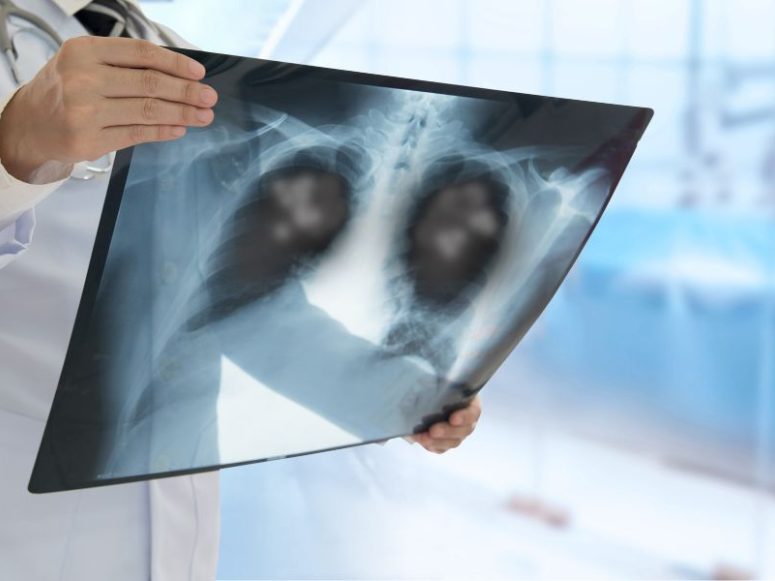Key Points
- On-site X-ray capabilities at urgent care centers provide immediate diagnostic results within 15-30 minutes, eliminating the need for separate imaging appointments and reducing overall treatment time.
- Cost savings are significant - urgent care X-rays typically cost $100-200 compared to $400-800 at emergency rooms, representing potential savings of 50-75% for the same diagnostic service.
- Common conditions requiring urgent care X-rays include suspected fractures, chest pain evaluation, abdominal pain assessment, and sports injuries, with immediate results guiding treatment decisions.
Urgent care X-ray services provide convenient, cost-effective diagnostic imaging for a wide range of medical conditions that require prompt evaluation. Understanding when X-rays are needed and how urgent care facilities provide these services helps patients make informed decisions about their healthcare.
Modern urgent care centers have invested in advanced digital X-ray equipment that provides high-quality images with immediate results. This technology allows healthcare providers to quickly diagnose conditions and develop appropriate treatment plans without the delays and expenses associated with hospital-based imaging.
Understanding Urgent Care X-Ray Capabilities
Digital X-Ray Technology
Most urgent care centers utilize state-of-the-art digital X-ray systems that produce high-resolution images within minutes. Digital technology offers superior image quality compared to traditional film X-rays while reducing radiation exposure and providing immediate results.
Digital X-ray systems allow healthcare providers to enhance, magnify, and manipulate images for better diagnostic accuracy. Images can be easily shared with specialists or your primary care physician for follow-up care when needed.
Types of X-Rays Available
Urgent care centers typically offer comprehensive X-ray services including chest X-rays, extremity imaging (arms, legs, hands, feet), spine X-rays, and abdominal imaging. These capabilities cover the vast majority of diagnostic imaging needs for urgent medical conditions.
Most urgent care facilities can perform X-rays of all body parts except specialized studies that require contrast materials or advanced positioning techniques typically available only in hospital radiology departments.
Common Conditions Requiring Urgent Care X-Rays
Suspected Fractures and Bone Injuries
X-rays are essential for diagnosing fractures, dislocations, and other bone injuries. Urgent care centers commonly evaluate injuries from falls, sports activities, workplace accidents, and motor vehicle incidents.
Immediate X-ray results allow healthcare providers to determine whether a bone is broken, assess the severity of the injury, and develop appropriate treatment plans including splinting, casting, or referral to orthopedic specialists.
Chest Pain and Respiratory Issues
Chest X-rays help evaluate chest pain, shortness of breath, persistent cough, and suspected pneumonia. These studies can identify lung infections, fluid accumulation, collapsed lungs, and other respiratory conditions requiring prompt treatment.
Urgent care chest X-rays provide valuable diagnostic information for conditions that need immediate attention but don't require emergency room evaluation, such as bronchitis, pneumonia, or minor chest injuries.
Abdominal Pain Evaluation
Abdominal X-rays can help identify intestinal blockages, kidney stones, and other causes of abdominal pain. While not as detailed as CT scans, abdominal X-rays provide useful initial diagnostic information for many conditions.
These studies are particularly valuable for evaluating suspected kidney stones, intestinal obstructions, and foreign body ingestion, helping determine whether further evaluation or immediate treatment is needed.
Benefits of Urgent Care X-Ray Services
Immediate Results and Treatment
One of the primary advantages of urgent care X-ray services is the ability to obtain immediate results and begin treatment during the same visit. This efficiency eliminates the need for multiple appointments and reduces overall treatment time.
Healthcare providers can review X-ray images within minutes, discuss findings with patients, and implement treatment plans immediately. This streamlined approach improves patient satisfaction and health outcomes.
Cost-Effective Diagnostic Imaging
Urgent care X-rays typically cost significantly less than hospital-based imaging while providing the same diagnostic quality. This cost advantage makes diagnostic imaging more accessible for patients paying out-of-pocket or those with high-deductible insurance plans.
The transparent pricing at most urgent care centers allows patients to understand costs upfront, avoiding the surprise billing often associated with hospital-based services.
Convenient Scheduling and Access
Urgent care centers offer extended hours and walk-in availability for X-ray services, providing convenient access when primary care physicians or hospital radiology departments aren't available. This accessibility is particularly valuable for injuries that occur outside normal business hours.
Many urgent care centers offer online check-in systems and real-time wait time updates, making it easier to plan your visit and minimize waiting time for diagnostic imaging.
When Urgent Care X-Rays Are Appropriate
Acute Injuries and Trauma
Urgent care X-rays are ideal for evaluating acute injuries such as suspected fractures, sprains, and trauma-related injuries that don't require emergency room evaluation. These include sports injuries, workplace accidents, and minor motor vehicle incidents.
The key is determining whether the injury is serious enough to require emergency care or can be appropriately evaluated and treated in an urgent care setting with X-ray capabilities.
Respiratory Symptoms
Chest X-rays at urgent care centers are appropriate for evaluating persistent cough, chest pain, shortness of breath, and suspected respiratory infections. These studies help differentiate between conditions requiring immediate treatment and those that can be managed with outpatient care.
Urgent care chest X-rays are particularly valuable for diagnosing pneumonia, bronchitis, and other respiratory conditions that need prompt treatment but don't constitute medical emergencies.
Follow-Up Imaging
Urgent care centers can provide follow-up X-rays for healing fractures, monitoring treatment progress, and evaluating ongoing conditions. This service is convenient for patients who need routine imaging without the complexity of hospital scheduling.
Limitations of Urgent Care X-Ray Services
Complex Imaging Studies
Urgent care centers typically don't offer advanced imaging studies such as CT scans, MRI, or ultrasound. Conditions requiring these specialized studies need evaluation at hospitals or dedicated imaging centers.
Understanding these limitations helps patients choose the appropriate level of care for their diagnostic imaging needs and avoid delays in obtaining necessary studies.
Specialized Interpretations
While urgent care physicians are trained to interpret common X-ray findings, complex cases may require radiologist interpretation or specialist consultation. Urgent care centers typically have arrangements for specialist review when needed.
Emergency Conditions
Severe trauma, life-threatening injuries, and conditions requiring immediate surgical intervention should be evaluated in emergency departments rather than urgent care centers, even if X-rays are needed.
Preparing for Your Urgent Care X-Ray
What to Expect
X-ray procedures at urgent care centers are quick and painless, typically taking 5-10 minutes to complete. You'll be positioned by a radiology technician, and multiple views of the affected area may be taken to ensure comprehensive evaluation.
Results are usually available within 15-30 minutes, allowing your healthcare provider to discuss findings and treatment options during the same visit.
Insurance and Payment
Most insurance plans cover urgent care X-rays when medically necessary. Verify your coverage and understand any copay or deductible requirements before your visit to avoid unexpected costs.
Many urgent care centers offer transparent pricing and payment plans for patients paying out-of-pocket, making diagnostic imaging more accessible and affordable.
Follow-Up Care and Referrals
Coordination with Primary Care
Urgent care centers typically provide X-ray results and treatment summaries to your primary care physician, ensuring continuity of care and appropriate follow-up when needed.
Specialist Referrals
When X-ray findings indicate the need for specialist care, urgent care providers can facilitate referrals to orthopedic surgeons, pulmonologists, or other specialists as appropriate.
Conclusion
Urgent care X-ray services provide convenient, cost-effective diagnostic imaging for a wide range of medical conditions requiring prompt evaluation. With immediate results, transparent pricing, and extended availability, these services offer significant advantages over hospital-based imaging for appropriate conditions.
Understanding when urgent care X-rays are appropriate and what to expect during your visit helps you make informed healthcare decisions while accessing quality diagnostic imaging when you need it most. This convenient option bridges the gap between primary care and emergency services, providing timely diagnosis and treatment for urgent medical conditions.
References:
[1] American College of Emergency Physicians. "Emergency Care vs. Urgent Care." https://www.emergencyphysicians.org/article/er101/emergency-care-vs.-urgent-care-whats-the-difference
[2] Urgent Care Association. "Industry White Paper 2024." https://urgentcareassociation.org/
[3] RadiologyInfo.org. "X-ray (Radiography) - General." https://www.radiologyinfo.org/en/info/radiography








